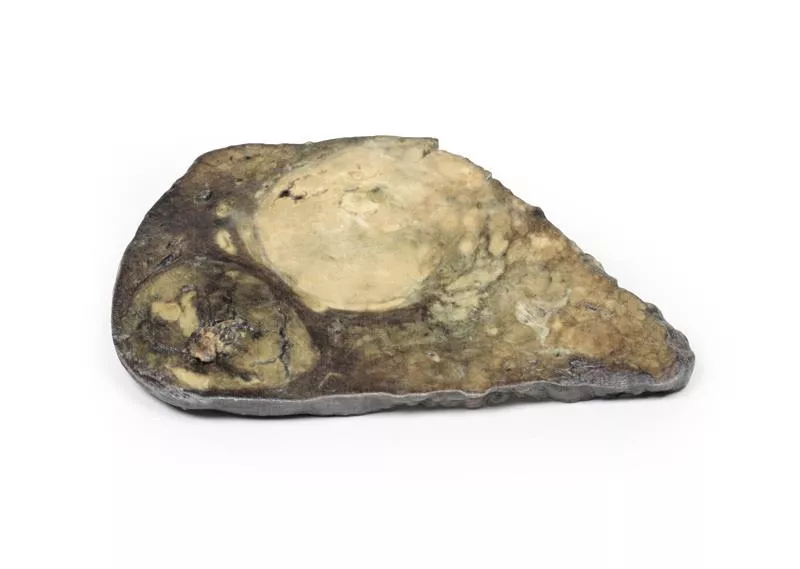Product information "Hepatocellular Carcinoma"
Clinical History
A 60-year-old male was admitted with jaundice, melena, and abdominal distension. He had a known history of untreated Hepatitis C due to previous intravenous drug use. On further questioning, he reported a 9-month history of fatigue, weight loss, nausea, and intermittent dull pain in the right upper abdomen. Liver ultrasound revealed two large lesions. The patient died shortly after admission due to suspected oesophageal variceal haemorrhage.
Pathology
The liver specimen from the postmortem shows a macronodular cirrhosis with multiple nodules up to 2?cm in size, separated by narrow fibrous bands. Additionally, two large round tumours measuring 8?cm and 6?cm are present. Their cut surface shows areas of necrosis, haemorrhage, and bile staining. This is an example of hepatocellular carcinoma (HCC) arising in a cirrhotic liver.
Further Information
Hepatocellular carcinoma is the most common primary malignant liver tumour and originates from hepatocytes. Risk factors include Hepatitis B and C, liver cirrhosis, aflatoxin exposure, non-alcoholic fatty liver disease, haemochromatosis, and Wilson’s disease. The tumour often develops in the setting of genetic alterations, such as gain-of-function mutations in beta-catenin and loss-of-function mutations in p53. Clinical presentation may include abdominal pain, fatigue, weight loss, fullness, and in some cases jaundice or bleeding. HCC can metastasize via the bloodstream, especially to lungs, abdominal lymph nodes, and bones. Death typically occurs due to cachexia, haemorrhage, or liver failure. Treatment options depend on tumour stage and patient condition and may include surgical resection, tumour ablation, chemotherapy, or liver transplantation.
A 60-year-old male was admitted with jaundice, melena, and abdominal distension. He had a known history of untreated Hepatitis C due to previous intravenous drug use. On further questioning, he reported a 9-month history of fatigue, weight loss, nausea, and intermittent dull pain in the right upper abdomen. Liver ultrasound revealed two large lesions. The patient died shortly after admission due to suspected oesophageal variceal haemorrhage.
Pathology
The liver specimen from the postmortem shows a macronodular cirrhosis with multiple nodules up to 2?cm in size, separated by narrow fibrous bands. Additionally, two large round tumours measuring 8?cm and 6?cm are present. Their cut surface shows areas of necrosis, haemorrhage, and bile staining. This is an example of hepatocellular carcinoma (HCC) arising in a cirrhotic liver.
Further Information
Hepatocellular carcinoma is the most common primary malignant liver tumour and originates from hepatocytes. Risk factors include Hepatitis B and C, liver cirrhosis, aflatoxin exposure, non-alcoholic fatty liver disease, haemochromatosis, and Wilson’s disease. The tumour often develops in the setting of genetic alterations, such as gain-of-function mutations in beta-catenin and loss-of-function mutations in p53. Clinical presentation may include abdominal pain, fatigue, weight loss, fullness, and in some cases jaundice or bleeding. HCC can metastasize via the bloodstream, especially to lungs, abdominal lymph nodes, and bones. Death typically occurs due to cachexia, haemorrhage, or liver failure. Treatment options depend on tumour stage and patient condition and may include surgical resection, tumour ablation, chemotherapy, or liver transplantation.
Erler-Zimmer
Erler-Zimmer GmbH & Co.KG
Hauptstrasse 27
77886 Lauf
Germany
info@erler-zimmer.de
Achtung! Medizinisches Ausbildungsmaterial, kein Spielzeug. Nicht geeignet für Personen unter 14 Jahren.
Attention! Medical training material, not a toy. Not suitable for persons under 14 years of age.


































